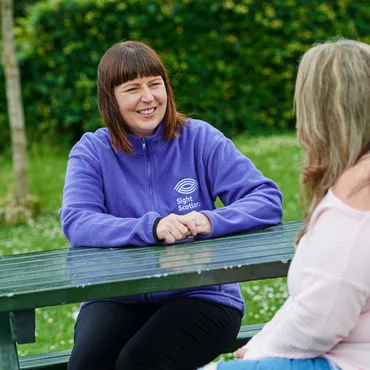A 30% increase in organic clicks with a specialised content strategy
We've partnered with Diabetes UK on digital marketing for over four years. Most recently, working together to enhance their SEO by consolidating invaluable content into strategically crafted hubs. This approach resulted in a 30% increase in non-brand organic clicks.

Diabetes UK

The outcome
- 30% increase in non-brand organic clicks from Google
- 145% increase in clicks for ‘Symptoms’ and ‘Signs’ keywords
The opportunity
Reaching a broader audience
Diabetes UK has an extensive library of evergreen content that addresses various aspects of diabetes, including its prevention, treatment, and associated risks. The content is created with medical signoff by clinicians and active involvement from users to ensure the resources align with clinical guidelines and effectively meets the needs of people living with diabetes and their loved ones.
While the content was comprehensive, it needed strategic reorganisation to improve its visibility on search engines, extending its reach to a broader audience.
For example, the Symptoms of Diabetes page covered symptoms across all different types of diabetes. However, we found that users were specifically searching for information tailored to their type of diabetes in high numbers i.e. ‘type 1 diabetes symptoms’ or ‘type 2 diabetes treatments’. We discovered that the generalised pages were not performing as well for these more specific searches.
Our approach
Content optimisation
In response to the evolving needs of users, we transitioned from generalised content pages to specialised hubs, each tailored for different types of diabetes. This pivot meant that instead of broad-brush pages, specific spaces would enhance user experience, accessibility and search engine visibility.
The newly designed content hubs have separate parent pages for type 1, type 2 and Gestational diabetes and child pages for symptoms, treatments, and associated risks. This SEO technique helps to boost the visibility of all of the pages within it, particularly the parent page of the hub.

New content hubs showing parent and child page structure
Our restructure extended to other aspects of the website, such as treatments and risks, designed to target more high search volume terms. This improved search engine visibility and made the information more accessible.
By tailoring each hub to the specific needs and search patterns of the audience, we not only enhanced the user experience but also significantly improved search engine rankings. These strategic adjustments laid the groundwork for the impressive results we achieved below.
The results
Increasing web traffic and clicks
As a result of this work, web traffic and clicks increased significantly, ranking above the NHS for diabetes-specific search terms.
We saw these YoY results:
- 30% increase in non-brand organic clicks from Google
- 21% increase in clicks for ‘Type 1 diabetes’ keywords
- 19% increase in clicks for ‘Type 2 diabetes' keywords
- 14% increase in clicks for ‘Gestational diabetes' keywords
- 145% increase in clicks for ‘Symptoms’ and ‘Signs’ keywords
Encouraged by the success, we applied this content structure to other sections of the website, such as insulin and remission, and have continued to see similar results.
Final thoughts
SEO and quality content go hand-in-hand
Diabetes UK started from a position of strength thanks to its high-quality, user-focused content. By reorganising that content in a more search engine-friendly way, we were able to tap into a larger audience and reach more people who needed support.
In SEO, the work is never really done. It's an ongoing effort, and as our work with Diabetes UK demonstrates, even well-established websites have room to grow and improve.



